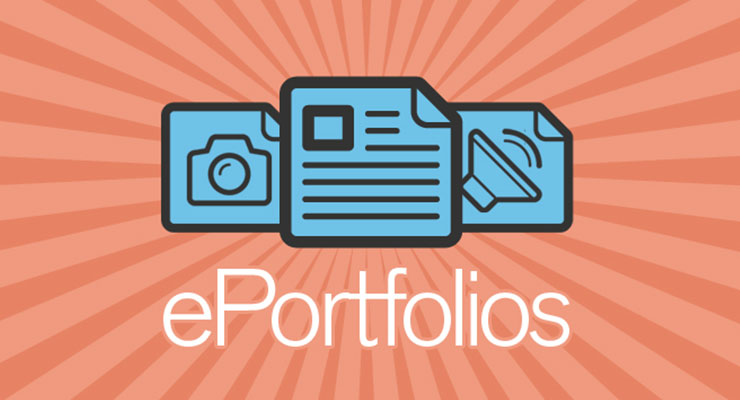The e-Portfolio Revolution
What is an e-Portfolio?
According to the e-Portfolio project at Regis University, “A portfolio is a collection of work developed across varied contexts over time. The portfolio can advance learning by providing students and/or faculty with a way to organize, archive and display pieces of work”.
Electronic portfolios, or e-Portfolios as they are commonly known, are becoming increasingly popular because of the dual purpose they provide; the documentation of achievement and the documentation of learning. The electronic format allows faculty and other professionals to evaluate student portfolios using technology, which may include the internet, audio, video, and animation.

The Association for Authentic, Experiential, and Evidence-Based Learning (AAEEBL) states “higher education institutions are now starting to create departmental and institutional portfolios as a means for evaluating student learning on a more global level. Institutional portfolios provide a vehicle for assessing the impact of the entire educational experience on student learning. They can be used to drive internal improvement and external accountability. Like traditional student portfolios, e-Portfolios also allow for internal improvement and external accountability but rather conducted on the program or institutional level.”
Why are e-Portfolios so relevant today?
The Trent Batson Blog, Briefings on Technology for Learners and Leaders, shares that “the electronic portfolio belongs to the learner. It is a web-based application that can upload and store any file type and serve as evidence of meeting course competencies, or such, for graduation or future employment.. It is thus an electronic record of achievement that can be constantly sorted and culled and curated over time. It is an active repository with many management tools that can generate Web presentations for particular purposes; it is a resume-maker with linked evidence. This basic function enables learning outside the classroom to be recorded and visible through the evidence–photos, video and audio clips, writing, and other kinds of evidence about the students entire learning experience.”
How are e-Portfolio’s being used at Arizona State University?
The English Department is currently piloting e-Portfolio software (Digication). The goal of this pilot is to significantly upgrade the current system in place which connects the three major areas of focus in a writing class—showcasing student work, program assessment, and writing research. Other schools and departments using e-Portfolio software include The W.P. Carey School of Business, The Ira A. Fulton School of Engineering, Mary Lou Fulton Teachers College, and Career Services.
Will an e-Portfolio help graduate’s gain employment?
A research study has just been published by AAC&U providing data about employers and e-Portfolios. The study, It Takes More Than a Major: Employer Priorities for College Learning and Student Success states, “Employers express interest in e-portfolios and partnerships with colleges to ensure college graduates’ successful transition to the workplace. In addition to a resume or college transcript, more than four in five employers say an electronic portfolio would be useful to them in ensuring that job applicants have the knowledge and skills they need to succeed in their company or organization.”
What is the future of e-Portfolios in higher education?
Many universities across the United States are now requiring all graduating students to provide evidence demonstrating knowledge of general education core competencies, which are documented in an e-Portfolio. Click here to review an example of this requirement at Clemson University.
The recent accreditation process at Arizona State University sought key indicators of performance and evidence including actual student work. There is discussion that rather than a once-every-ten-years visit, accreditation will be a steady review, meaning data has to be more readily accessible than in the past. The evaluation tools and features and the ability to archive all student work make the use of an e-Portfolio for accreditation purposes very attractive.
Do you currently use portfolios in your course? Share your experiences with us in the comment section below.
Example e-Portfolios
- A quality example of a professor’s e-Portfolio
- A quality example of an e-Portfolio showcasing curriculum
- A quality example of a student’s course specific e-Portfolio
- A quality example of a student’s e-Portfolio from Arizona State University
- A quality example of a student’s e-Portfolio from Arizona State University
For contributions to this article, a special thanks to Trent Batson, President, The association for Authentic, Experiential and Evidence-Based Learning (the professional association for the world e-Portfolio community http://www.aaeebl.org/).



